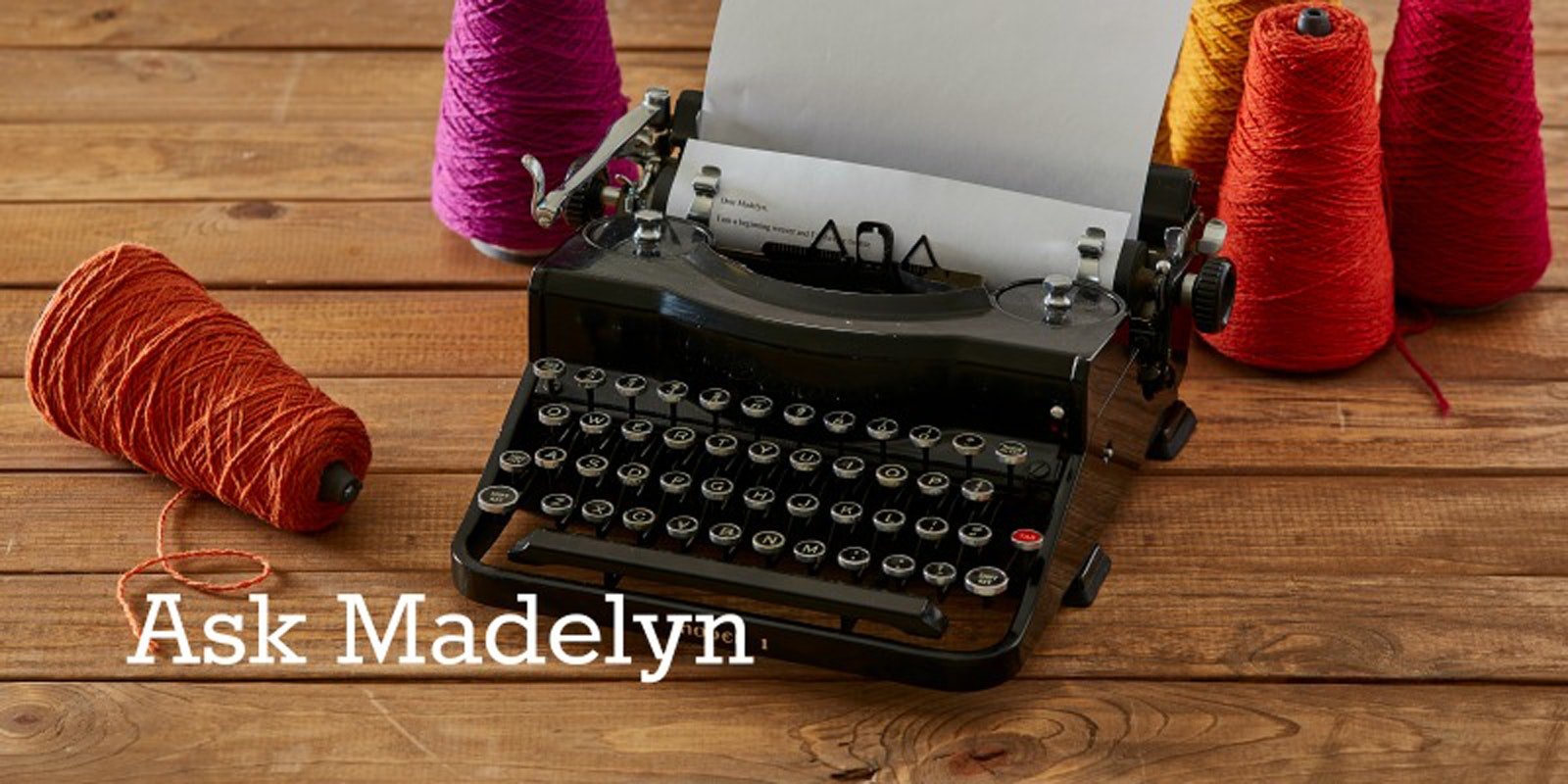Hi Madelyn,
I have trouble understanding the concept of weaving on opposites. I am clear that on four shafts, 1 & 3 and 2 & 4 are opposites, as are 2 & 3 and 1 & 4. I think. In both cases, half the shafts are down, and half are up. What happens with eight shafts? Do you always have to use half of the shafts or does opposites allow you to choose say 1 & 5 then 2 & 6 then 3 & 7 then 4 & 8 (or none of the above!)?
Many thanks,
–Jacqui
Hi Jacqui!
The term “on opposites” is very much like most of our weaving terminology. Our names for weave structures and terms for processes were used by a particular weaver or region and many of them then were first published in some of our earliest books (Atwater’s Shuttle-Craft Book of American Handweaving, Marguerite Davison’s A Handweaver’s Pattern Book, and Mary Black’s Key to Weaving. Even if the terms didn’t really have an evident connection to what they named (summer and winter, huckaback, hopsack, crackle, and many more) they were in such common use that they have endured in our language. Some of them have do have at least some connection to what they name (color-and-weave, rose fashion and star fashion, overshot), but you’d really have to know how the process or structure works to see the connection.
On opposites was first used, as far as I can tell, to describe the threading for monk’s belt. Monk’s belt is an overshot threading on four shafts that uses only two blocks, one threaded on shafts 1-2 and the other on shafts 3-4. (Normally, on four shafts, four blocks are threaded: 1-2, 2-3, 3-4, 4-1). Once the term was used for monk’s belt, its use expanded. When four overshot blocks are threaded on eight shafts (instead of eight blocks), the threading is called “on opposites”: A = 1-2, B = 3-4, C – 5-6, D = 7-8. I’m sure there are other weave structures in which you might raise one group of shafts against another group. Peter Collingwood uses “on opposites” to describe the treadling of the pattern weft in a twill rug: 1-2 vs 3-4; 2-3 vs 4-1; 3-4 vs 1-2; 4-1 vs 2-3 (1-3 vs 2-4 is used after each of those two pairs of picks for the ground).
On the whole, the “on opposites” label refers to a pattern result that occurs from the opposition of two or more shafts or treadles. (Weaving plain weave on four shafts with 1-3 vs 2-4 doesn’t count as “on opposites.”) There are probably many more situations in our literature than I’m describing here.
Madelyn
If you have a weaving question we would love to hear from you! Please email Madelyn!
View related & recent "Ask Madelyn" posts!
Also use the SEARCH box to find even more posts. Search for "Ask Madelyn" and "Madelyn van der Hoogt" and browse the "Articles" results.

